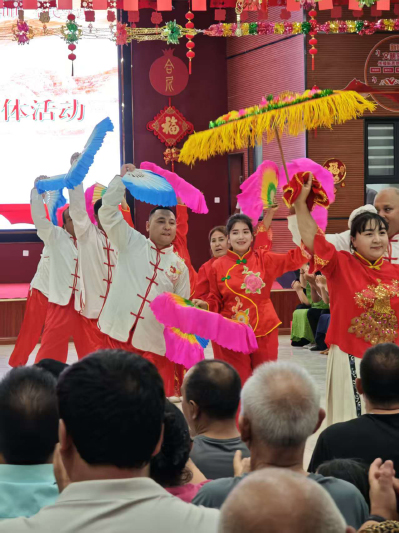| Xinjiang Today |
| Fast facts on ethnic autonomy | |
|
|
 A performance of yangge, a folk dance especially popular in northeast China, in Heni Village, Hetian (Hotan) Prefecture, on August 14 (SHANG ZHOUHAO)
Xinjiang's full name is Xinjiang Uygur Autonomous Region, and the term "autonomous region" comes from China's distinctive system of regional ethnic autonomy. Xinjiang was officially established as an autonomous region in 1955, shortly after the founding of the People's Republic of China in 1949. This arrangement was made in recognition of the longstanding reality that many ethnic groups—including Uygur, Kazak, Hui and Mongolian people—have lived together in the region for centuries. Unlike a "province," the name "autonomous region" is not merely an administrative label but carries special institutional significance. It indicates that, under the unified leadership of the Central Government, the region is granted regional legislative power, economic management authority and cultural protection rights. In other words, "autonomous region" is not just an administrative term. It is a concrete expression of China's ethnic policy. Fact 1: The regional government leader's ethnic background The government of an autonomous region should be headed by a member of the ethnic group exercising regional autonomy there. For instance, the chairperson of the Xinjiang Uygur Autonomous Regional Government should be a Uygur, while the chairperson of the Guangxi Zhuang Autonomous Regional Government should be a Zhuang. This arrangement is designed to enhance their unique features and promote ethnic unity. The establishment of an autonomous region aims to achieve two goals: safeguarding the lawful rights and interests of ethnic minorities, and integrating regional development with the country's overall strategy. Autonomous regions receive preferential policies for economic and social development. In recent years, initiatives such as the west China development program and the Silk Road Economic Belt have kept Xinjiang at the forefront of national strategy. Regional ethnic autonomy is better understood as autonomy within the overall national framework. The system seeks to balance ethnic unity, social stability and modernization, an approach that reflects a distinctive feature of China's governance model. Fact 2: The power to formulate local regulations The people's congress of an autonomous region has the authority, within the framework of the Constitution and national laws, to formulate regulations based on local realities. These regulations may differ from those in other provincial-level regions, particularly in areas such as language use and cultural heritage protection. Including Xinjiang, there are five autonomous regions in China. The others are: Xizang Autonomous Region, Guangxi Zhuang Autonomous Region, Ningxia Hui Autonomous Region and Inner Mongolia Autonomous Region. Each was established with its own historical and cultural background, but they share the same guiding principle—granting a certain level of autonomy to ensure equal rights in language use, culture and social development for ethnic minorities, while integrating these regions into the nation's development. Fact 3: Other autonomous divisions In addition to provincial-level autonomous regions, there are also autonomous prefectures and counties that provide ethnic autonomy at sub-provincial levels. |
|
||||||||||||||||||||||||||||
|